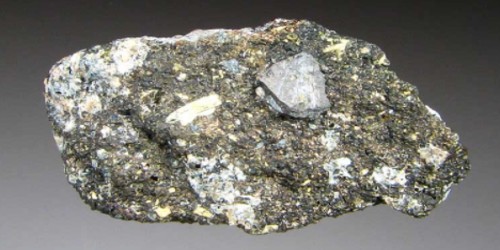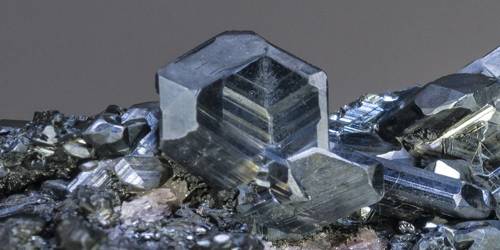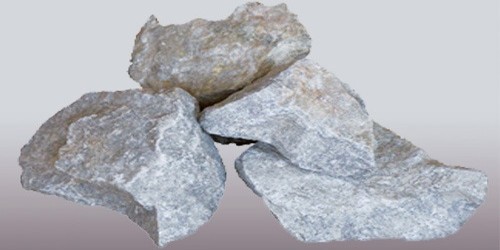Glaucodot is a cobalt iron arsenic sulfide mineral with formula: (Co, Fe)AsS. The cobalt: iron(II) ratio is typically 3:1 with minor nickel substituting. It is a mineral, iron and cobalt sulfarsenide, occurring in grayish-white crystals. It forms a series with arsenopyrite (FeAsS). This mineral consisting of a grayish white metallic-looking cobalt iron sulfarsenide occurring in orthorhombic crystals or massive.
Glaucodot was first described in 1849 in Huasco, Valparaíso Province, Chile. Its name originates from the Greek γλανκός (“blue”) in reference to its use in the dark blue glass called smalt.
General Information
- Category: Sulfide minerals
- Formula: (Co,Fe)AsS (Co75 Fe0.252+AsS)
- Crystal system: Monoclinic
- Crystal class: Prismatic (2/m) (same H-M symbol)

Fig: Glaucodot – cobalt iron arsenic sulfide mineral
Properties
It is brittle with a Mohs hardness of 5 and a specific gravity of 5.95. It occurs in high-temperature hydrothermal deposits with pyrrhotite and chalcopyrite. Glaucodot is classed as a sulfide in the arsenopyrite löllingite group. It is an opaque grey to tin-white typically found as massive forms without external crystal form. It crystallizes in the orthorhombic system.
- Formula mass: 165.15 g/mol
- Color: Grayish tin white, Reddish silver white
- Crystal habit: Massive – Uniformly indistinguishable crystals forming large masses.
- Cleavage: None
- Fracture: Brittle – Uneven – Very brittle fracture producing uneven fragments.
- Mohs scale hardness: 5
- Luster: Metallic
- Streak: black
- Diaphaneity: Opaque
- Specific gravity: 5.9 – 6.01, Average = 5.95
Occurrence: In deep-seated deposits of high-temperature hydrothermal origin. The locality at Håkansboda, Sweden has rare twinned dipyramidal crystals.
Association: Cobaltite, pyrite, chalcopyrite
Information Source:
















